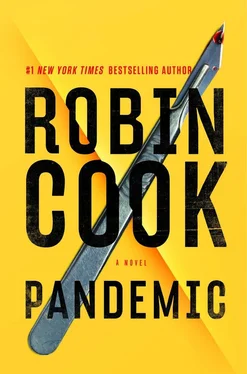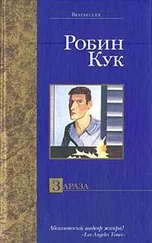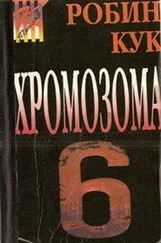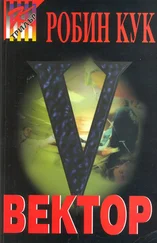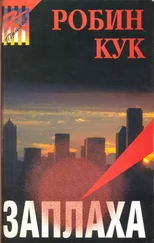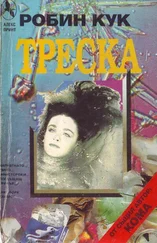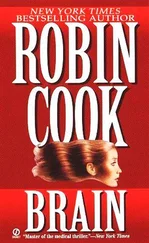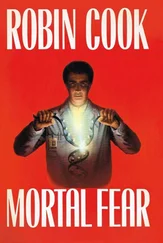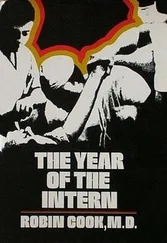“I agree,” Jack said. “Vinnie?”
“Circular,” Vinnie said, rolling his eyes. Vinnie and Jack had worked with each other so many times over so many years that they could anticipate each other. Vinnie knew that the tone of voice Jack had used strongly suggested he was about to start a “teaching” session, which invariably meant the autopsy would end up taking considerably longer than otherwise, keeping Vinnie away from the coffee break he always took after the third case was over. Vinnie was a coffee addict and his last cup had been just after seven that morning.
“Mr. Sanchez?” Jack asked, ignoring Vinnie’s mild acting out.
“Huh?” Carlos blurted.
Jack turned to look into the eyes of the new hire, just visible through the man’s plastic face shield. “Are we keeping you from some other, more interesting engagement, Mr. Sanchez?” he asked sarcastically, but then let it go. He turned back to Lou. “It is definitely circular, meaning the bullet entered perpendicular to the plane of the skull. More apropos, it is certainly not what is described as stellate or jagged. Now, do you see any stippling around the periphery of the wound?” The little red dots in the skin that sometimes surrounded gunshot wounds resulted from gunpowder residue emerging from a gun barrel along with the bullet.
“I don’t see that much except on the ear,” Lou said, trying to be optimistic.
“There is a bit on the ear and also some on the neck,” Jack said, pointing. “Obviously the full head of hair absorbed most of it.”
“I don’t think I’m going to like where you’re going with all this,” Lou said. The victim was the wife of one of Lou’s detective colleagues who also worked out of the NYPD’s Homicide Division.
Jack nodded. There was no doubt that Lou had become quite forensically knowledgeable over the years of their friendship. “There’s more. Let’s use a wooden dowel to align this entrance wound above the right ear with the exit wound below the left mandible.”
Vinnie handed Jack the wooden rod he had leaned against the autopsy table. Grasping it at both ends, Jack held it so that it rested on the crown of the patient’s head but lined up with the two wounds.
Lou reluctantly agreed. “I’m getting the picture: The pathway of the bullet is definitely downward.”
“I’m sorry to be the bearer of bad news,” Jack offered, hearing the disappointment in his friend’s voice. “Unfortunately, what we see here is not a contact wound. My guess at this point would be that the gun barrel had to have been about two feet away and maybe as much as thirty inches. And the trajectory was definitely oriented caudally. Are you aware of the statistics about this?”
“Not exactly,” Lou said. “But I know it’s not what I was hoping. Jesus, I’ve known this guy for more than twenty years. I’ve even had dinner in their home out in Queens a dozen times, especially after I got divorced. They had their problems, like all couples. But hell! They have two grown kids.”
“Ninety percent or more of small-arms suicides are contact wounds, meaning the barrel of the gun is up against the skull when discharged. In only about five percent of suicides is the bullet path downward, and an even smaller percentage where it’s directed from the back to the front, both of which we see here.”
“So you don’t think this was a suicide?” Lou asked, almost plaintively.
Jack shook his head.
“Can we get on with this freakin’ autopsy,” Vinnie complained.
Jack flashed a dirty look at his favorite mortuary tech. Vinnie ignored it. “I’m having caffeine withdrawal.”
“Was there a suicide note?” Jack asked, returning his attention to Lou.
“Clutched in her left hand,” Lou said with a nod. “One of Walter’s service automatics was in her right hand. She was lying on their bed on her back. It was a mess.”
“And he had called you?” Jack said.
“Yeah,” Lou said. “We’d been together most of the evening after being called out on that first autopsy we did. Walter found her dead when he got home, or so he said. I was the one who put in the nine-one-one call as I was leaving my apartment on my way over to see him. I got there before anyone else, and the man was beside himself. It was godawful. Not that I haven’t seen worse.”
“Well, we’ll have to see how it plays out,” Jack said. “Maybe there was a third party involved. But I certainly will not be signing this out as a suicide. I’m definitely thinking homicide. But let’s do the autopsy and go from there.”
“Hallelujah,” Vinnie said, making a rapid sign of the cross in the air in appreciation.
“Let’s not be blasphemous,” Jack chided sardonically.
“You should talk,” Vinnie scoffed. More than anyone at the OCME, Vinnie knew just how irreverent Jack Stapleton could be. Jack was not a religious man after his first wife and two young daughters had been killed in a commuter plane crash. He couldn’t imagine a Christian God would let such a terrible thing happen.
The postmortem went quickly. Other than a number of uterine fibroids, the woman’s general health had been excellent and there was no pathology. The part of the autopsy that took the longest came after Vinnie had shown Carlos how to remove the skull cap. With appropriate exposure, Jack had carefully followed the bullet’s transit through the brain, where it had wreaked complete havoc. While Jack was busy, Vinnie exposed the underside of the skull cap to photograph the beveled edges of the inner aspect of the entrance wound.
When Jack’s third autopsy was complete, he left Vinnie and Carlos to clean up and return the cadaver to the walk-in cooler. Although Lou usually departed as soon as the main part of the autopsy was over, on this occasion he stayed until the bitter end. Jack sensed he was reluctant to head back to his lonely apartment in SoHo. The implication was that he needed to talk more about the disturbing autopsy results, even though he was plainly exhausted from having been up all night.
After changing out of their autopsy gear, Jack took Lou up to the so-called lunchroom on the second floor, which wasn’t much with its blue-painted concrete-block walls, cheap molded-plastic furniture, and handful of vending machines. For a modern medical examiner’s office with a staff of highly trained, world-class forensic pathologists, it was pathetic. But there was a light at the end of the tunnel. A brand-new high-rise NYC medical examiner’s building had been constructed on 26th Street, four blocks south of the sad, existing six-story structure that had been built almost a century ago at 30th Street and First Avenue. Most of the Manhattan office’s hundreds of employees had already moved to the palatial new location. Those who had yet to go were the toxicologists and the entire bevy of MEs. The problem was that the new building did not have an autopsy room. A new state-of-the-art autopsy facility was still in the planning stages, to be built as a separate structure next to the new high-rise. Until it was operational, Jack and his colleagues had to remain in the old, outdated structure.
“Knowing the choices, what can I get you?” Jack asked. He regarded his friend of almost twenty years. As his name clearly suggested, Lou was distinctly southern Italian, with thick, reasonably long, mostly dark hair and equally dark eyes and decidedly olive skin. A handsome, heavy-featured man of medium height and musculature, with a girth that suggested too much pasta and not enough exercise. As usual, he was wearing a dark blue suit that didn’t appear to have been pressed in the previous year. His rumpled white dress shirt was open at the collar and his gravy-stained silk tie was loosened and appeared never to have been untied, but rather slipped over the head at the end of each and every day.
Читать дальше
